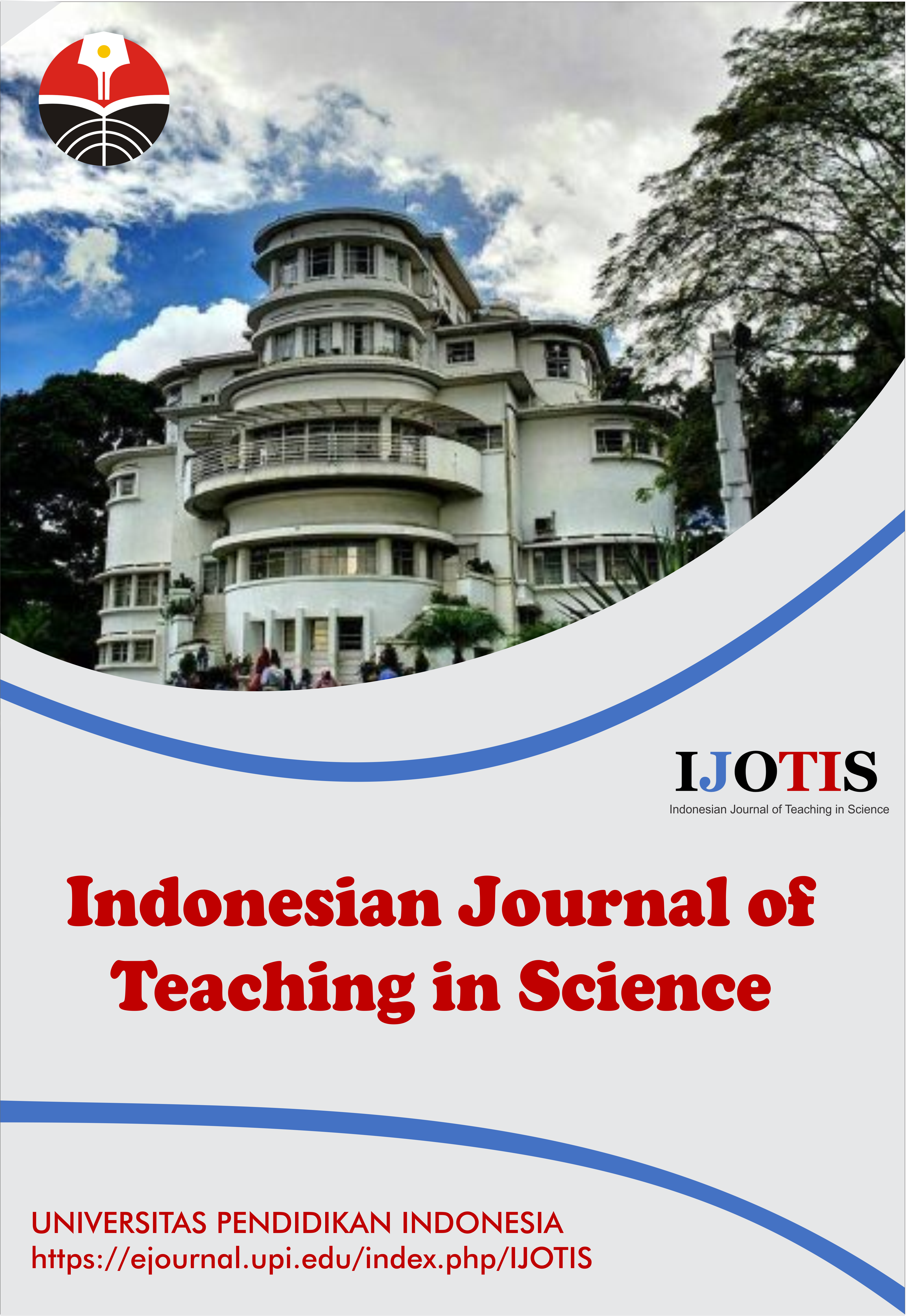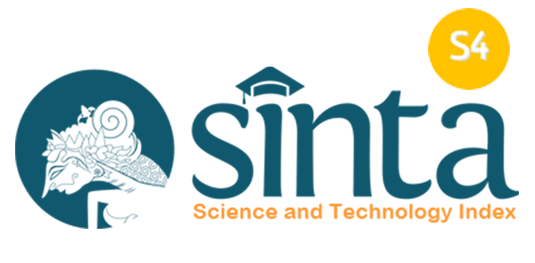Assessment of Instructional Material Relevance and Availability for Biology Education
Abstract
This study assessed the relevance and availability of instructional materials for biology education in Awka South Local Government Area of Anambra State, Nigeria. Adopting a descriptive survey design, data were collected from 38 biology teachers selected from 19 public secondary schools using a self-structured 4-point rating questionnaire. The study revealed a diverse range of instructional materials, including posters, organ tissue specimens, maps, plasma specimens, and others, catering to various learning styles and objectives. The study highlighted the importance of considering local context and resources in enhancing biology education. Findings have implications for policymakers, curriculum developers, and educators, suggesting avenues for improving resource provision and enhancing learning outcomes.
Keywords
Full Text:
PDFReferences
Abubakar, S., Tahir, N. B., and Musa, H. R. (2024). Impact of improvised instructional materials in teaching and learning of biology among school students in Jema’a Local Government Area. ATBU Journal of Science, Technology and Education, 11(4), 307-316.
Abunimye, D. A., Okafor, I. M., Okorowo, H., and Obeagu, E. I. (2024). The role of GATA family transcriptional factors in haematological malignancies: a review. Medicine, 103(12), e37487.
Amos, S., Eghan, M. P. K., and Oppong, E. (2022). The impact of instructional materials in teaching and learning of biology in the colleges of education in the central region of Ghana. Open Journal of Educational Research, 2(5), 213-221.
Arum, J. N. (2015). Availability and utilization of instructional materials for the implementation of the new biology curriculum in senior secondary schools in Lagos, Nigeria. Sky Journal of Educational Research, 3(7), 78-86.
Bakare, B. (2024). The use of audio-visual materials in promoting the teaching and learning of French language in Ekiti-State. International Journal of English Language and Linguistics Research, 12(2), 1-17.
Burns, H. L. (2015). Transformative sustainability pedagogy: Learning from ecological systems and indigenous wisdom. Journal of Transformative Education, 13(3), 259-276.
Coleman, J. M., McTigue, E. M., and Dantzler, J. A. (2018). What makes a diagram easy or hard? The impact of diagram design on fourth-grade students’ comprehension of science texts. The Elementary School Journal, 119(1), 122-151.
Fischinger, S., Fallon, J. K., Michell, A. R., Broge, T., Suscovich, T. J., Streeck, H., and Alter, G. (2019). A high-throughput, bead-based, antigen-specific assay to assess the ability of antibodies to induce complement activation. Journal of Immunological Methods, 473, 112630.
Idris, A. T., Shamsuddin, I. M., Arome, A. T., and Aminu, I. (2018). Use of audio-visual materials in teaching and learning of classification of living things among secondary school students in Sabon Gari LGA of Kaduna State. Plant, 6(2), 33-37.
Irhasyuarna, Y., Kusasi, M., Fahmi, F., Fajeriadi, H., Aulia, W. R., Nikmah, S., and Rahili, Z. (2022). Integrated science teaching materials with local wisdom insights to improve students' critical thinking ability. BIO-INOVED: Jurnal Biologi-Inovasi Pendidikan, 4(3), 328-334.
Joshi, A., Vinay, M., and Bhaskar, P. (2020). Impact of coronavirus pandemic on the Indian education sector: perspectives of teachers on online teaching and assessments. Interactive technology and smart education, 18(2), 205-226.
Junco, M. A., and Nabua, E. (2023). The academic performance of grade-11 biology on modular distance learning: Basis for instructional material development. International Journal of Science Education and Teaching, 2(2), 87-105.
Kazoka, D., Pilmane, M., and Edelmers, E. (2021). Facilitating student understanding through incorporating digital images and 3D-printed models in a human anatomy course. Education Sciences, 11(8), 380.
Konopka, C. L., Adaime, M. B., and Mosele, P. H. (2015). Active teaching and learning methodologies: some considerations. Creative Education, 6(14), 1536-1545.
Lawrence, J. E., and Tar, U. A. (2018). Factors that influence teachers’ adoption and integration of ICT in teaching/learning process. Educational Media International, 55(1), 79-105.
Martínez-Sanz, E., Catón, J., Maldonado, E., Murillo-González, J., Barrio, M. C., Paradas-Lara, I., and Mérida-Velasco, J. R. (2023). Study of the functional relationships between the buccinator muscle and the connective tissue of the cheek in humans. Annals of Anatomy-Anatomischer Anzeiger, 246, 152025.
Menberu, A. W. (2024). Technology-mediated financial education in developing countries: A systematic literature review. Cogent Business & Management, 11(1), 2294879.
Msimango, S. M., Mtshali, T. I., and Khoza, S. D. (2024). Equipping Civil Technology Teachers with Hands-On Skills and Educational Resources for Effective Teaching of Practical Lessons. Research in Social Sciences and Technology, 9(2), 341-358.
Ruado, L. F., and Cortez, L. A. S. (2024). Enhancing student engagement and achievement in biology through interactive slide presentations. American Journal of Education and Technology, 3(1), 51-59.
Saro, J., Bello, J., Concon, L., Polache, M. C. C., Ayaton, M. J., Manlicayan, R., and Campomanes, J. (2023). Contextualized and localized science teaching and learning materials and its characteristics to improve Students' learning performance. Psychology and Education: A Multidisciplinary Journal, 7(1), 1-1.
Savasci, A. Ć. (2014). Use of instructional technologies in science classrooms: Teachers' perspectives. Turkish Online Journal of Educational Technology-TOJET, 13(2), 197-201.
Trust, T., Maloy, R. W., and Edwards, S. (2023). College student engagement in OER design projects: Impacts on attitudes, motivation, and learning. Active Learning in Higher Education, 24(3), 353-371.
Wood, W. B. (2009). Innovations in teaching undergraduate biology and why we need them. Annual Review of Cell and Developmental, 25(1), 93-112.
DOI: https://doi.org/10.17509/ijotis.v5i1.83292
Refbacks
- There are currently no refbacks.
Copyright (c) 2025 Universitas Pendidikan Indonesia

This work is licensed under a Creative Commons Attribution-ShareAlike 4.0 International License.
Indonesian Journal of Teaching in Science (IJoTIS) is published by Universitas Pendidikan Indonesia (UPI)
 Indonesian Journal of Teaching in Science
Indonesian Journal of Teaching in Science



